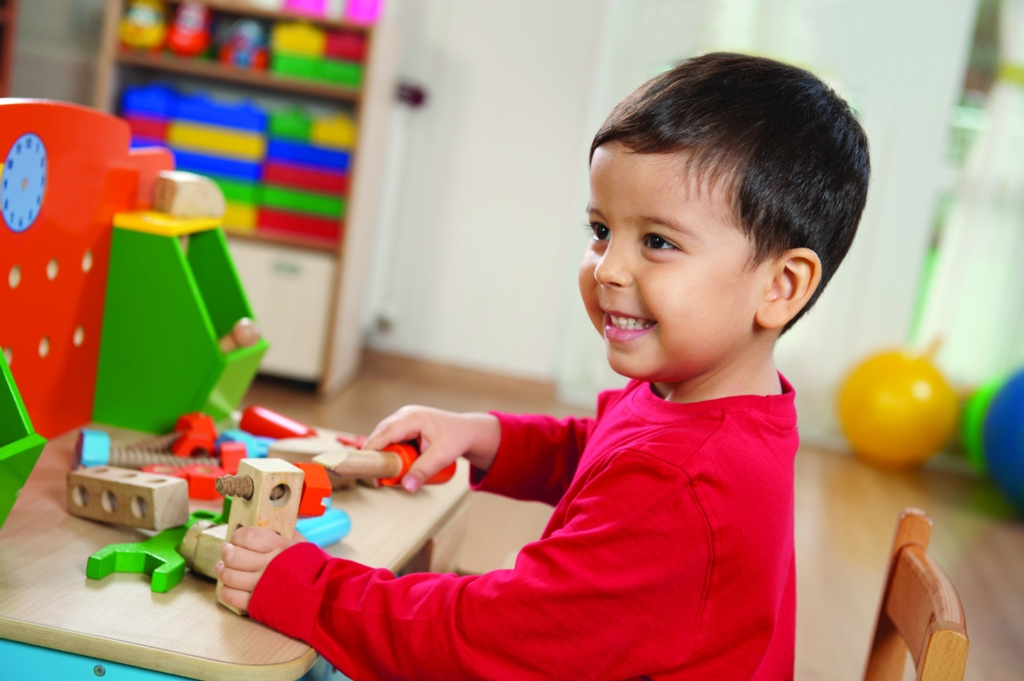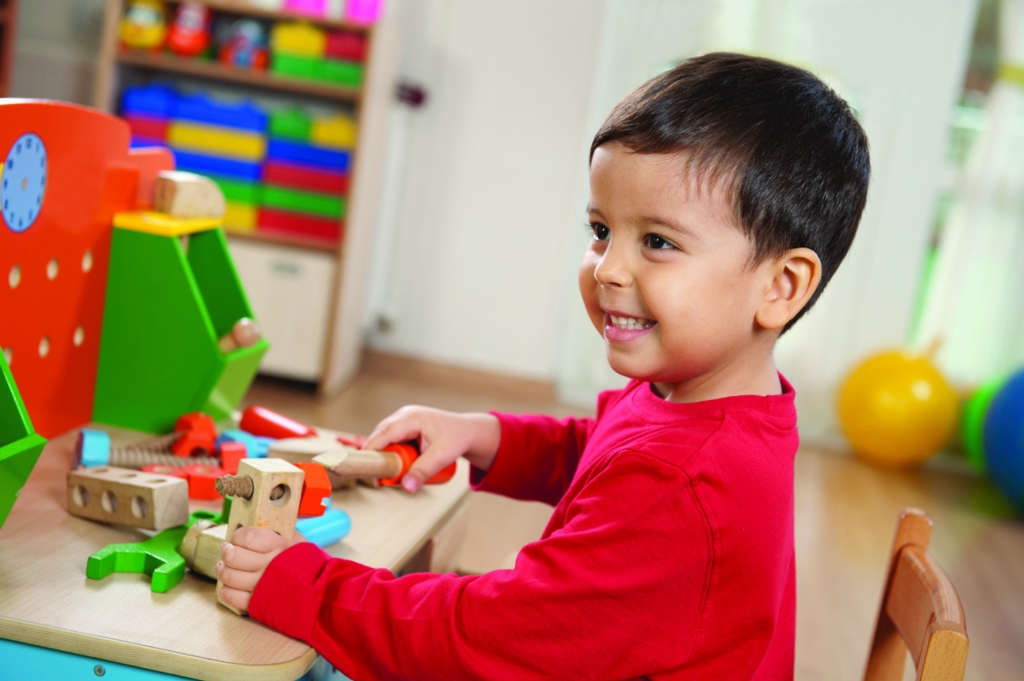Let Me Do It Myself! Montessori in the Home
It seems daunting to many that I have the responsibility of not just one, but four children to guide and direct. I was introduced to the Montessori way of learning when my first son was just an infant and I enrolled him in a Montessori school. Over the years, Montessori teachers have shared many common sense principles of the Montessori method that I have incorporated into my home allowing my children to become more independent, self-reliant and responsible.


My son’s first teacher taught me that when a child has a “prepared home” that facilitates his development, he is able to make deliberate choices and have successful actions. I started in my home by eliminating boxes and large bins to make room for small baskets and bins on low shelves. I soon observed my children playing more peacefully when their toys were on open shelves rather than piled in toy boxes because it appealed to their sense of order.
Using separate containers to hold a small selection of legos, blocks, and crayons also helped with my children’s ability to find things to do, and, as you might imagine, makes putting his “work” away much easier. Work? Yes, work. Maria Montessori called the children’s choices work. Not because it is something dreadful but because it is an intentional plan which the child has chosen and is responsible for beginning and bringing to completion.
Giving my children their own space in every room was also a new thought to me. I started with the entrance in the mudroom by installing cubbies for each child, which included low hooks for their coats and a shelf for their shoes, lunch box, bags and “special treasures.” This is their place to access as they come and go. They don’t need to go into a frenzy looking for their belongings as it all has a place.
In our kitchen, the children can easily find cutlery, napkins and place settings to use when setting the table for our meals together. Food preparation is a perfect time for us to connect and share. Having a few child-sized cutting boards, vegetable cutters and bowls on a shelf accessible to them works perfectly. I found that not only do they eat what they prepare but they also enjoy their contributions to the family meal. Finding a space where snacks are within their reach, along with a pitcher of water and glasses on a low shelf in the refrigerator, are easy ways I can help foster their independence on a daily basis.
The bathroom is such an important part of every home. But wait, it isn’t prepared for humans under 4’5”. To adjust for the inconsistencies of each user, the bathroom needs a simple stool for the shortest family member to reach the sink when washing hands, and a towel placed within easy reach. A full-length mirror or low mirror is needed to keep children in tune with how they look. It’s so much easier for a child to wipe their face when they can actually see themselves in a mirror
I soon discovered that the bedroom could become the disaster area in every child’s life. Generally, this is because there is too much of everything. Boxing up clothing that is out of season and taking away the play items that don’t need to be in this space helps maintain order. Placing clothing in two low drawers gives my youngest a sense of mastery when choosing what to wear. (But remember, its up to you to pre-select what goes in the drawers that the child is free to choose from!) A youth bed keeps the young child safe but not caged and allows them to get out of bed easily. I was surprised to find that my children didn’t fall out of bed nor did they disrespect the limits of bedtime just because they had a low bed. In fact, they reveled in the fact that they could get in and out of bed “all by myself!”
There are so many ways we give children the message that we expect them to be responsible and independent. I am a better parent today because I understand more about what I can do to help my children “do” for themselves, which will help them become capable and responsible citizens.
Andrea O’Brian is the Director of Pubic Relations and Events at Princeton Montessori School and the mother of four children. To find out more about the Montessori method of education visit www.princetonmontessori.org.







